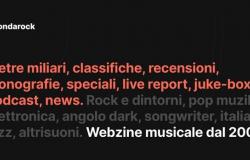Alessandro Araimo.
by Massimo Scaglioni*
Imagine an Italian gentleman in his fifties, blue suit and matching tie always tightly tied around his neck, the speech of a Bocconian – practical and not too refined – tempered by experience as a top manager in various publishing groups, between France and Italy, accustomed to think about numbers, data and, above all, money. Although little known to the general public, he is the architect of the operations that opened the Italian television market, going beyond the Pillars of Hercules of the Rai-Mediaset duopoly, the now gangrenous system built by Silvio Berlusconi in the 1980s and 1940s. years ago, and remained intact until the day before yesterday. To understand the meaning of the operation that brought Amadeus from Rai1 to Canale Nove we can only start from the American group Warner Bros. Discovery (WBD) and the man who leads it: his name is Alessandro Araimo, he has been CEO of the giant since 2022 medial for Southern Europe, therefore Spain as well as Italy.
In fact, Araimo was responsible for the most significant purchase in the market of Italian TV faces last year: we are talking about Fabio Fazio, who moved bag and baggage from Rai3 to WBD from the beginning of the last television season, dragging the Nove channel from less than 2% share to over 10% (of course, only on Sundays: but the overall effect on the network was felt). The success of the “Fazio operation” gave the Italian CEO wide credibility at an international level.
And then, go back to imagining that gentleman being able to convince the Americans to relaunch, raising the stakes: you can almost hear him reeling off the extraordinary share numbers (65% of the entire audience, with peaks over 70%) of the last ” Sanremo Festival” – comparable to a local “Super Bowl”, the final of the football championship, the traditional number one in US television ratings – or those of a daily program that attracts over a quarter of the viewers in the peak hour of the schedule. Both programs – “Sanremo” and the ritual “game” of parcels, “Affari Tui”, which unites 5 and a half million faithful a day – can all be traced back to one face: that of Amedeo “Ama” Sebastiani.
“Ama who?”, Love who? The Americans, practical and money-conscious like Araimo, have understood that the game is worth the risk and have put almost one hundred million euros on the table for the next four years: they won’t all go to Amadeus, as their friend Fiorello was keen to point out , but they are the investment for the entire industrial operation, aimed at putting into play, as early as next September, new programs and tested formats (there are rumors of the move to Nove of a title like “Soliti Ignoti”, whose option in Rai is expiring, and would be perfect for “access prime time”, the prime slot of 8.30pm).
How, then, can we explain the Ama-Exit, the exit of the strongest face on TV, at the peak of his career, from the comfort zone of Rai1, beyond the Pillars of Hercules of the Nine? Reconstructions and background stories have brought into play the most varied interpretations, from the always classic money to decidedly more futile and frankly unrealistic motivations, and denied by the person directly involved (Ama is tired of commuting to Rome; Ama has asked for a program for his wife Giovanna… , and so on). The truth is that the recurring image of a highly politicized Rai – although there has almost never been a moment in which it wasn’t – of a Rai as a somewhat adrift boat from which to escape to other, more attractive shores has now started to take clear shape (whether this is true or not is another question), and who knows who else will leave Viale Mazzini. But, above all, outside the Rai-Mediaset duopoly, today there is a decidedly richer world, in which Warner Discovery’s bet takes off: new competition means realistic alternatives for successful faces, driven to capitalize and monetize it.
What should we expect as an outcome of this operation? On the public service front, in truth, the problems are much more complex than the flight of a few faces, even as important as Fazio or Amadeus: they concern the overall innovation of Rai, its transformation into a media publisher capable of recovering its universality looking at younger audiences, who know “Mare Fuori”, “Il Collegio” and (thanks to Ama) “Sanremo” and little else. That is, capable of juggling between the habits consolidated by the linear schedule and the needs to strengthen on-demand platforms (such as Raiplay) to target more dynamic audiences. The persistent strength of Rai1 (and partly of Canale 5) is ritual and habit, and in a peak segment like “access prime time” it will not be difficult to find a face capable of replacing Amadeus (fra Stefano De Martino , Marco Liorni or so). Even “Sanremo” has now taken a path from which it is difficult to turn back, whoever leads it (today the bet is on Carlo Conti: popularity and solid experience, with Sanremo already behind him). But the real issue concerns the winners of this operation, starting with the managers of WBD led by the Bocconian Araimo: Amadeus is a presenter of the “Baudesque” school, a man at the service of the content he presents, and therefore it will be necessary to invest in adequate content at the turn of Nine. Breaking the consolidated habits of viewers, especially the more habitual ones, attracting audiences (and therefore advertising investments) not only on Sundays, but every day, around Canale Nove, from the Rai and Mediaset networks, is a task that still needs to be done. And then we need to understand, finally, what Discovery wants to be when it grows up: a generalist TV, linear and linked to the schedule, increasingly national-popular? Or an aggregator of networks – like Real Time – and on-demand services, like Discovey Plus and, soon, Max (the new platform that brings together the valuable content of HBO, the premium channel for great quality series)? For now the idea of ”stealing” the big faces from the bigger competitors has paid off (they had tried in the past, without success, even with Maria De Filippi). To tell the truth, Silvio Berlusconi had already done it in the 1980s, stealing many of his leading figures from Rai. But the accounts, in the end, will have to add up. Numbers, data, money. It’s just businessthe Americans would say.
* Massimo Scaglioni is director of CeRTA (Catholic University) and TV critic of Famiglia Cristina.
Tags: Heres director Amadeuss move Canale Nove





